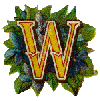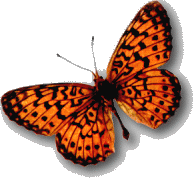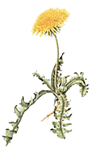
"The Biological Science of Plants"


 |
Flower in the crannied wall, I pluck you out of the crannies,
Alfred, Lord Tennyson |
 |
 e are completely, totally, dependent on green plants! Through photosynthesis, only plants can convert the sun's energy into forms that are usable by and vital to the very existence of animal life. I remember years ago a science fiction horror movie named (I think) "Swamp Thing". Because of some freak laboratory accident a man was transformed into a creature that was half-man, half-plant. He lived in a swamp, and of course saved the damsel in distress! He didn't need food or water like us, but like plants could produce his own energy from sunlight and carbon dioxide. However we're not "Swamp Things" and rely on plants for our nourishment. Without plants, we wouldn't exist, but we take them largely for granted. We know that vegetables are plants, but all animals, either directly by eating plants, or indirectly by eating other animals that eat plants would not exist without plants. Many luxuries and condiments, and other useful substances such as fibers, lumber, coal and oil, medicines, and and many drugs either depend on plants or are produced by them. In the past, primative peoples used plants not only for food, shelter, clothing, and medicine, but also for hunting and fishing. Even today, ethnobotanists, are travelling to remote tropical regions and interviewing witch doctors and medicine men to preserve their knowledge on the uses of plants. Time is short. Bulldozers are coming. We need to identify those plants with potential for modern civilization and save them from extinction.
e are completely, totally, dependent on green plants! Through photosynthesis, only plants can convert the sun's energy into forms that are usable by and vital to the very existence of animal life. I remember years ago a science fiction horror movie named (I think) "Swamp Thing". Because of some freak laboratory accident a man was transformed into a creature that was half-man, half-plant. He lived in a swamp, and of course saved the damsel in distress! He didn't need food or water like us, but like plants could produce his own energy from sunlight and carbon dioxide. However we're not "Swamp Things" and rely on plants for our nourishment. Without plants, we wouldn't exist, but we take them largely for granted. We know that vegetables are plants, but all animals, either directly by eating plants, or indirectly by eating other animals that eat plants would not exist without plants. Many luxuries and condiments, and other useful substances such as fibers, lumber, coal and oil, medicines, and and many drugs either depend on plants or are produced by them. In the past, primative peoples used plants not only for food, shelter, clothing, and medicine, but also for hunting and fishing. Even today, ethnobotanists, are travelling to remote tropical regions and interviewing witch doctors and medicine men to preserve their knowledge on the uses of plants. Time is short. Bulldozers are coming. We need to identify those plants with potential for modern civilization and save them from extinction.


Wildflowers are Native Plants. That is, plants that are native to a particular region. You name a flower, and it's probably a wildflower somewhere in the world, or at least it was hybridized from a plant that was a wildflower somewhere. Orchids grow wild in the woods. Roses can be found growing wild, and so can beautiful phlox, daisies, poppies, azaleas, rhodendrons, and a multitude of flowers in cultivation in gardens all over the world. On the other hand, many introduced non-native garden plants have escaped cultivation and can be found growing wild. Are these wildflowers too? You tell me.
 |
Many wildflowers bring beauty to the Texas Hill Country after the Bluebonnets fade. Here are Prairie paintbrush, primrose, green milkweed, yellow flax, blue sage, and white milkwort. This photo was taken by my friend in Austin, freelance photographer, Paul Montgomery. When I met Paul he was working in the camera department of The University COOP. He gave me lots of encouragement and support for my wildflower and closeup photography. Paul moved on to Holland Photo in Austin, and the last I heard, was working at Texas Parks and Wildlife.
In 1982, The National Wildflower Research Center was created by Lady Bird Johnson. Located in Austin, Texas, the Wildflower Center is committed to the preservation and re-establishment of native wildflowers, grasses, shrubs, and trees through research and educational programs.
One of the best-known wildflowers in Texas is the Bluebonnet. "It's not only the state flower but also a kind of floral trademark almost as well known to outsiders as cowboy boots and the Stetson hat... The bluebonnet is to Texas what the shamrock is to Ireland, the cherry blossom to Japan, the lily to France, the rose to England and the tulip to Holland." -- Jack Maguire

![]()
Ralph Waldo Emerson (1803 - 1882) defined a weed as "a plant whose virtues have not yet been discovered." But for most of us, a weed is simply a plant that is growing somewhere we don't want it to be.
If a morning glory sprouted in the middle of a vegetable garden, then it most likely would be considered a weed, for it would soon twine around and sprawl over the vegetable plants. If that same
morning glory seedling were dug up and moved beside the garden fence, then would it still be a weed? Or, a dandelion in the middle of the front lawn, is considered a weed by most people. But, since
dandelion leaves are edible, in the garden, some might just consider it a vegatable! Whether you see a plant as a "Wildflower" or as a "weed" depends mainly on your opinion of its food value or aesthetic appeal.
Whether you see a plant as a "Wildflower" or as a "weed" depends mainly on your opinion of its food value or aesthetic appeal.
|
What would the world be, once bereft Of wet and of wildness? Let them be left, O let them be left, wildness and wet; Long live the weeds and the wilderness yet. |
| Gerard Manley Hopkins (1844 - 1889) |

I Am A Proud Member Of: Phenomenal Women of the Web |
 |
| Home | Introduction | Garden | Links | Gallery |
| Austin | Memphis | Music | Rose Garden | Bein' Nice |
| Botany | Awards Garden | Cats | Chocolate | Shade Garden |
| Sign my Guestgook | 
| View my Guestbook |

©1997/2004 Virginia Rose
![]()